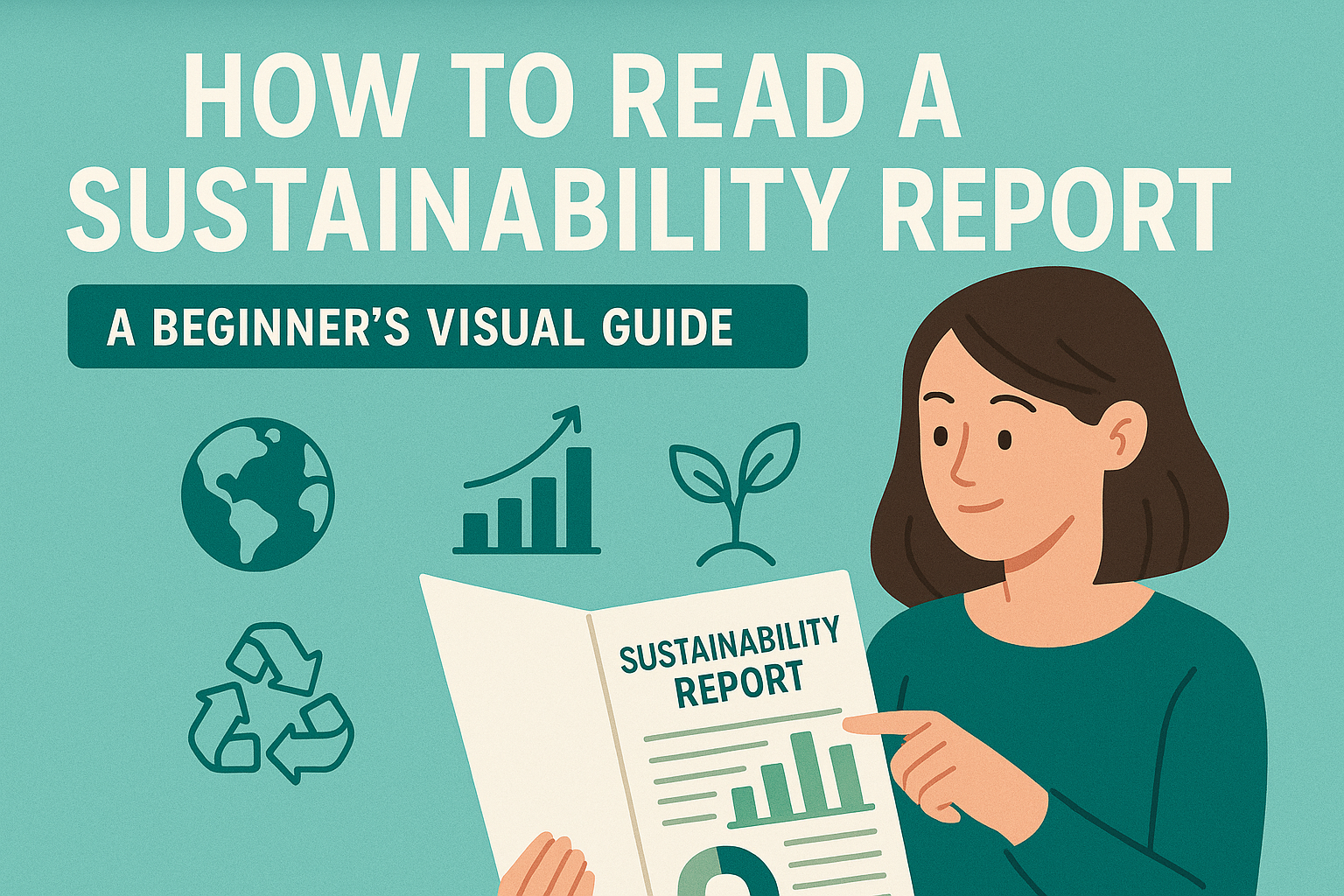New to sustainability reporting? Not sure how to decode all those charts, ESG metrics, and acronyms?
This beginner’s visual guide walks you through how to read a sustainability report step by step with finance and ESG learners in mind.
What Is a Sustainability Report?
A sustainability report is a company’s formal disclosure of its environmental, social, and governance (ESG) performance. It explains how an organization manages its impact on the planet, people, and profits in one consolidated document.
Think of it as the non-financial balance sheet that sits beside traditional financial reporting.
Quick definition:
A sustainability report outlines a company’s ESG goals, activities, and performance metrics often aligned with global standards like GRI or SASB.
Want to understand the backbone of these reports?
Check out our post on What Is Sustainability Accounting?
Why Sustainability Reports Matter in Finance and ESG
Sustainability data is no longer a “nice-to-have.” Investors, regulators, and even auditors now expect companies to disclose how climate risks, social governance, and supply chain issues impact financial performance.
Here’s why finance professionals need to care:
- ESG risks affect company valuations and creditworthiness.
- Sustainability KPIs tie directly into long-term profitability.
- Disclosure quality impacts investor confidence.
If you’re planning a career in ESG or accounting, reading and analyzing these reports is no longer optional. It’s essential.
Key Sections of a Sustainability Report
Let’s break it down. Most sustainability reports are structured around key building blocks. Here’s what you’ll typically find:
1. CEO Message / Introduction
Usually, the opening section a high-level statement of purpose and strategic ESG direction.
2. Materiality Assessment
A visual or matrix showing which ESG issues are most important to stakeholders and business operations.
3. ESG Performance Metrics (The Core)
Here’s where you’ll see KPIs and data visualizations covering:
- Environmental: GHG emissions, energy use, water consumption
- Social: Workforce diversity, labor practices, community engagement
- Governance: Board structure, ethics policies, compliance
4. Alignment with Standards
Expect references to GRI, SASB, or IFRS Sustainability Standards. Sometimes these are summarized in appendices.
Related Reading: IFRS Sustainability Standards & FSA: A Guide for Indian Accountants
How to Interpret Key Metrics and KPIs
Sustainability reports throw a lot of data your way. Here’s how to stay grounded:
1. GHG Emissions (Scope 1, 2, 3)
Learn to distinguish direct vs indirect emissions. Most firms now report at least Scopes 1 and 2.
2. Water Use & Waste Metrics
Often measured in m³ or tonnes, these reveal operational efficiency and environmental impact.
3. DEI Metrics (Diversity, Equity & Inclusion)
Check gender ratios, pay equity disclosures, and leadership representation.
4. ESG Targets & Progress
Look for baseline year comparisons, % completed, and timelines.
Tip: Always ask — is this metric comparable, reliable, and material to the business?
Common Standards You’ll See (And Why They Matter)
Here’s a snapshot of the most cited frameworks:
| Standard | Focus | Who Uses It? |
|---|---|---|
| GRI (Global Reporting Initiative) | Broad ESG impact | Multinationals, NGOs |
| SASB (Sustainability Accounting Standards Board) | Industry-specific metrics | Investors, asset managers |
| IFRS Sustainability Standards | Global financial ESG reporting | Public companies, auditors |
Want to go deeper?
Check out our post on What is Sustainability Accounting? Why It Matters More Than Ever in 2025.
Beginner Mistakes to Avoid
Many new readers fall into these traps — don’t be one of them:
- Skimming without context
Always read the materiality section before diving into numbers. - Assuming all metrics are audited
Not every number is verified. Check for third-party assurance statements. - Ignoring footnotes and definitions
Different companies define “employee” or “carbon neutral” differently. Read the fine print.
FAQ: What Beginners Often Ask
Q.1: What is a sustainability report?
Ans: Document disclosing a company’s environmental, social, and governance (ESG) performance and strategy.
Q.2: Who uses sustainability reports?
Ans: Investors, regulators, customers, ESG analysts, and accountants rely on these reports to evaluate long-term risk and responsibility.
Q.3: How is a sustainability report different from an ESG report?
Ans: They’re often used interchangeably, but “ESG report” is more investor-focused, while “sustainability report” can include broader stakeholder information.

